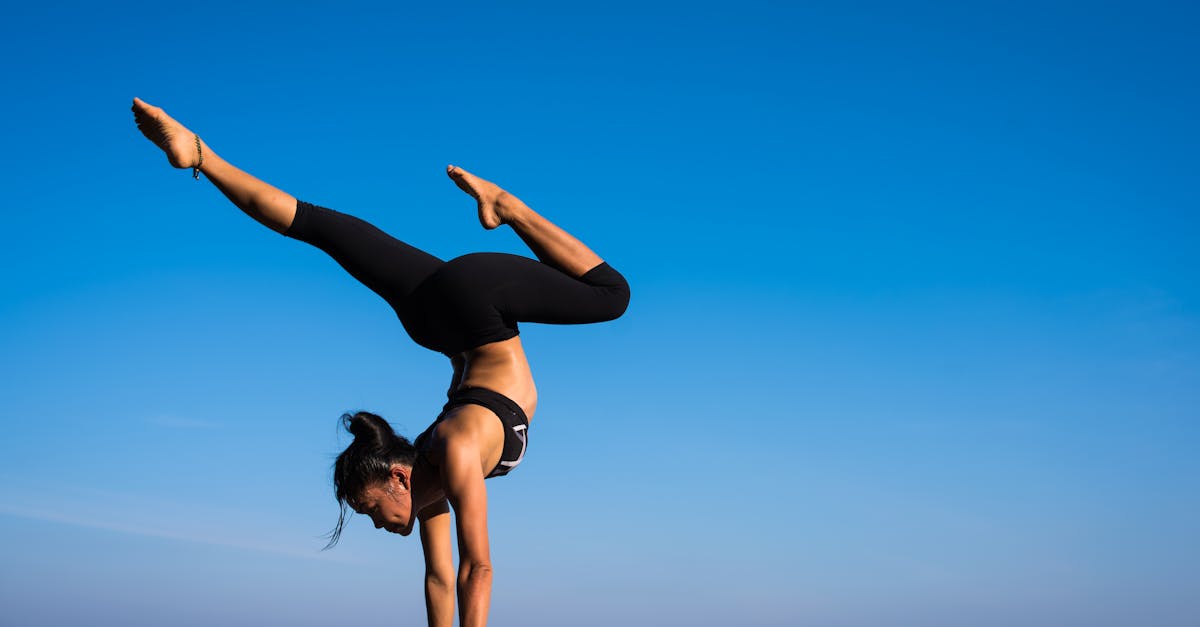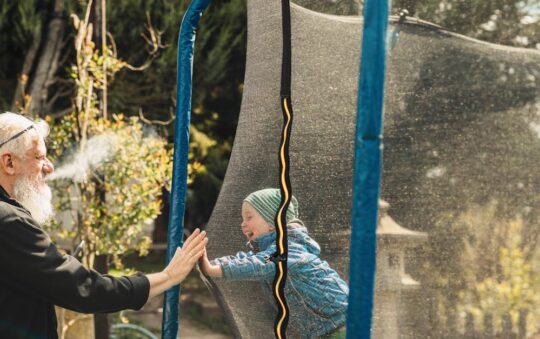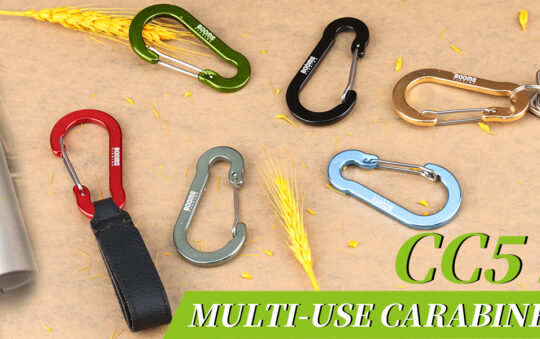Have you ever wondered which water sport does a better job at sculpting your core—kayaking or paddleboarding? I’ve spent countless hours gliding across lakes and rivers, feeling my muscles engage in ways I never expected. The subtle shifts in balance and the rhythmic strokes make both activities more than just fun—they’re full-body workouts that challenge your core stability.
In this text, I’ll jump into the surprising ways each sport targets your core, breaking down the benefits you might not find in your usual gym routine. Whether you’re chasing strength or just curious about which paddle sport packs a bigger punch, stick around—I promise you’ll see these activities in a whole new light.
Kayaking vs Paddleboarding for Core Strength: An Overview
When it comes to boosting core strength, both kayaking and paddleboarding offer solid workouts but in slightly different ways. I’ve spent time doing both, and each challenged my core muscles uniquely.
Kayaking keeps you seated, which means your core works mainly to keep your balance while you power through the water with the paddle. Your obliques (those muscles on the sides of your torso) especially get a good workout since you’re twisting your torso with every stroke. This continuous twisting helps in building functional strength—think about how often we use torso rotation in daily activities like reaching or turning while carrying groceries.
Paddleboarding, on the other hand, demands constant balance because you’re standing on a floating board. If you wobble (and trust me, you will at first), your core has to kick into high gear to stabilize you. This engages not just the bigger core muscles but also the smaller stabilizers that rarely get much attention. Standing upright means you’re working your abs, lower back, and even hip muscles all at once just to stay upright and paddle forward.
Here’s a quick table comparing the two on key factors related to core strength:
| Feature | Kayaking | Paddleboarding |
|---|---|---|
| Core engagement | Rotation-focused, seated | Balance-focused, standing |
| Major muscles worked | Obliques, lower back | Abs, lower back, hip stabilizers |
| Balance challenge | Moderate | High |
| Skill level to start | Easier to pick up | Takes practice to balance |
| Suitable for all fitness levels | Yes, especially beginners | Better after some balance skills |
From my experience, if you’re looking for core exercises that involve rotation and upper body power, kayaking gives you plenty of twisting action. But if you want to activate your core in a way that mimics staying balanced under changing conditions (hello, daily life demands), paddleboarding is an excellent choice. My personal tip: try both over a few weeks and see which one keeps you motivated. Sometimes, mixing up activities is the real secret to sticking with a workout.
Here’s a quick takeaway for you to apply immediately:
- Start with kayaking if you prefer a seated workout with rotational core engagement that feels a bit like a low-impact gym routine.
- Give paddleboarding a shot if balance and full-body core activation appeal to you—even if it feels wobbly at first, those are the signs your core is working hard.
- Add short core strengthening exercises off the water (like planks or seated twists) to complement either sport for faster results.
At the end of the day, both sports fit nicely into everyday routines as outdoor activities that mix fun with fitness (which, let’s face it, is a must). Plus, spending time on the water has the bonus of fresh air and a way to unplug after a busy day—the core benefits come as a welcome side effect.
Features and Techniques Affecting Core Engagement
When it comes to building core strength through water sports, both kayaking and paddleboarding bring unique moves and muscle demands to the table. Let me walk you through how each activity gets your core firing differently—and why that matters if you’re aiming for a stronger midsection.
Core Muscle Activation in Kayaking
Kayaking feels like a core workout disguised as a peaceful paddle. This is because every stroke triggers your torso to twist in a way that really wakes up your obliques, the muscles along your sides that help you rotate and bend.
- How it works: As you plant your paddle in the water and pull, your upper body rotates toward that side while your lower body stays seated. This twisting motion activates your oblique muscles alongside the lower back, creating a workout that targets those rotational muscles more than straight-up contractions.
- Why it matters: If you spend a lot of time sitting at a desk or want better posture, working on rotational core strength helps. It aids spinal stability, which is like building extra protection for your back.
- Bonus: Kayaking is low-impact and seated, so it’s easier on the knees and hips if you have joint concerns.
I remember trying kayaking after weeks of working a desk job—my obliques seriously protested the next day. That soreness was a good reminder that these muscles had been neglected (which, trust me, is easier than it sounds).
Core Muscle Activation in Paddleboarding
Paddleboarding is a bit like a standing yoga pose combined with a rowing motion that keeps your core on high alert the whole time.
- Balance first: Since you’re standing on a board that can rock with every wave, your body constantly fires up those deep core stabilizers. This isn’t just about crunching muscles but keeping steady when the water moves.
- Full-body core workout: With each paddle stroke, you engage the larger abs and back muscles, but the real kicker is the smaller stabilizer muscles that don’t get much love in other workouts. Think of them as the backstage crew working quietly but vitally to keep you upright.
- Great for beginners and pros: Because balance challenges vary, paddleboarding scales well with skill level. Beginners get a steady balance foundation, while advanced paddlers push their core conditioning even further.
In my experience, paddleboarding felt like a mini dance of balance and strength. Falling over once or twice was part of the fun. Plus, I noticed my posture improved after just a few sessions, probably due to those nonstop core engagements.
Quick Tips to Boost Core Work on the Water
Whether you’re kayaking or paddleboarding, try these to get the most core oomph out of your sessions:
- Engage your belly button: Pull your belly button gently toward your spine as you paddle. It sounds simple but keeps your core tight and active.
- Controlled movements: Avoid just swinging your arms; focus on smooth, controlled strokes that come from torso rotation (kayaking) or stable balance (paddleboarding).
- Mix it up: Try alternating between sitting and standing in your paddleboard sessions for varied core challenge.
- Regular practice: Just 20-30 minutes a few times a week adds up faster than you’d expect. Consistency is your friend for lasting core strength.
Starting either sport, keep expectations realistic. You won’t get a six-pack overnight but you will notice better balance, posture, and functional strength that makes everyday moves easier. (That was a surprise bonus for me when reaching for stuff on a high shelf.)
Here’s a quick snapshot of how each activity targets core muscles:
| Sport | Core Focus | Main Muscle Groups Activated | Balance Demand | Best For |
|---|---|---|---|---|
| Kayaking | Rotational strength | Obliques, lower back | Moderate (seated) | Spinal stability, posture |
| Paddleboarding | Full-body stabilization | Abs, lower back, deep stabilizers | High (standing) | Balance, endurance, core tone |
I hope this clears up how each sport’s techniques shape your core experience—and why either is a great way to mix fitness with fun on the water.
Performance and User Experience for Core Strength
Picking between kayaking and paddleboarding for boosting core strength? Let’s break down how each stacks up in real-life use, so you can figure out what fits your routine and feels right on the water.
Effectiveness of Kayaking for Building Core Strength
Kayaking really shines if you want a workout that’s all about controlled twisting and power. When I’m out on the water paddling, I feel my obliques—the muscles on the sides of my torso—engage with every stroke. That steady torso rotation isn’t just good for workout points; it trains your posture and helps protect your lower back over time.
One neat thing about kayaking is how it supports your core without demanding you balance on a board. This makes it a solid option if you prefer a lower-impact activity or need a break from standing exercises. Plus, since you’re seated, it’s easier to focus on technique and pacing—great for folks who want to build core endurance without worrying about falling in every two minutes.
Here are some quick tips I follow to squeeze the most core power out of kayaking:
- Sit tall with your back straight to keep your core muscles activated.
- Use your torso rotation to drive each paddle stroke—not just your arms.
- Keep your movements smooth and controlled to engage stabilizing muscles.
Studies back this up too: A 2018 research report showed that paddling involves significant core muscle activation, especially the obliques and lower back muscles. So yes, it’s a straightforward way to build core strength while enjoying the calm vibes of being on the water.
Effectiveness of Paddleboarding for Building Core Strength
If you want to get your full core firing and feel a bit more of a challenge, paddleboarding amps things up. Standing on a board means you’re constantly using your abs, back, and even the tiny stabilizing muscles around your hips and spine to stay balanced. The nice part is that as your balance improves, your core gets stronger without you realizing it until you try stepping off the board and suddenly feel tall and steady.
I found paddleboarding to feel more like a total-body workout compared to kayaking, especially on choppier water. You engage muscles in a constant isometric hold—like when you flex your core to stay stable without moving much—which builds endurance over time. Plus, it gets your heart rate up subtly thanks to those little, continuous micro-adjustments your body makes.
If you’re just starting, don’t worry about standing perfectly still right away. It’s normal to wobble and that very wobble trains your muscles to react and stay firm. Here are a few things that helped me along:
- Practice bending your knees slightly to absorb movement and reduce fatigue.
- Focus on steady breathing to keep your core engaged and your balance calm.
- Try short sessions to build up endurance before cruising longer distances.
Research supports this hands-on feeling: One study showed paddleboarding engages more muscles overall for balance and stability compared to seated paddling. So if you want core strength and better coordination, paddleboarding answers that call nicely.
Whether seated rotation or standing balance fits you better, both sports offer solid core workouts with the bonus of being outdoors. Feel like your core could use a break from the usual crunches? Grab a paddle and get moving—your muscles will thank you.
Pros of Kayaking for Core Strength
Kayaking has a unique way of targeting your core, especially the muscles around your waist and lower back. When you paddle, you naturally twist your torso with each stroke. This twisting motion activates your obliques—the muscles on the sides of your abdomen—and your lower back muscles. I noticed that after regular kayaking sessions, my posture improved, and my back felt stronger during daily activities like sitting or bending.
Here’s what I like most about kayaking for core strength:
- Focused Rotation: Each paddle stroke requires controlled twisting, which helps build rotational strength. This kind of movement is great because it trains muscles you use every day when reaching or turning.
- Low-impact Exercise: Unlike some workouts that can be hard on your joints, kayaking lets you strengthen your core without bouncing or putting pressure on knees and hips. It’s perfect if you want a gentle but effective workout.
- Posture Boost: The need to sit upright and maintain balance while paddling encourages better posture, helping you avoid the slouching traps of desk jobs.
- Suitable for All Skill Levels: Since you’re seated, balance demands are lower than paddleboarding, so kayakers can focus more on the core twist without worrying about falling over.
If you want to make your kayaking trip even better for your core, try these tips:
- Keep your back straight and avoid leaning too far forward or back.
- Use your torso to initiate the paddle stroke instead of just your arms.
- Slow down your strokes and focus on smooth, controlled movements.
I found that even 20 minutes of mindful paddling engages my core like a mini workout session. Plus, it’s a fun way to get outside and relax. And on top of that, research supports that kayaking activates core muscles effectively, making it a solid choice if you’re after strength without extra strain.
So, if your goal is to build a strong center and improve everyday movements, kayaking delivers a fine mix of power, control, and low-impact activity that fits right into your week—without needing a gym membership or fancy gear.
Cons of Kayaking for Core Strength
While kayaking has plenty of perks for building core muscles, it’s not without its drawbacks—especially if you want a workout that really challenges your whole core area.
First off, kayaking mostly targets the side muscles in your torso—your obliques—and the lower back due to the twisting motion. That means the front part of your core, like your abs, doesn’t get as much love. If you’re hoping for a solid all-around core burn, kayaking alone might leave you wanting more.
Another thing to keep in mind is that kayaking is a seated activity. So the balance challenge is minimal. You don’t have to engage those smaller stabilizer muscles that get fired up when you’re standing or trying to balance on something wobbly. That means fewer opportunities for dynamic core activation compared to, say, paddleboarding or other standing water sports.
If you’re someone who likes variety or faster results, kayaking workouts can feel a bit repetitive. The rhythm of paddle strokes is consistent, which is great for endurance but could get stale for those who love mixing up their training. This repetitive motion might also lead to imbalanced muscle development if you favor one side during paddling (we’ve all unknowingly done that).
Finally, while kayaking is gentle on the joints, that low-impact nature means your core won’t be pushed as hard as you might want if you’re training for serious strength gains. It’s fantastic for posture and spinal health but may need some extra off-water workouts to keep your core consistently progressing.
Here are some quick takeaways if you’re considering kayaking mainly for core strength:
- Limited full-core activation: Focuses mostly on obliques and lower back, not the entire core.
- Minimal balance challenge: Less engagement of stabilizer muscles compared to standing water sports.
- Repetitive motion risk: Can lead to muscle imbalances if one side dominates.
- Lower intensity for core strength: Great for endurance but might need supplementary exercises.
Pros of Paddleboarding for Core Strength
Standing on a paddleboard means your core is working overtime to keep you balanced. Unlike kayaking where you’re seated, paddleboarding demands ongoing engagement from both the big core muscles—like your abs and lower back—and the smaller ones that stabilize your body. This full-core workout often translates to improved posture and better muscle endurance throughout the day.
Here’s why paddleboarding really shines for core strength:
- Constant Balance Challenge: Your body makes tiny adjustments every second to stay upright. This activates muscles deep inside your core that usually don’t get much attention during typical workouts. Think of it as a low-key but continuous core gym session.
- Engages Multiple Muscle Groups: The act of paddling while balancing means your core isn’t working alone. Your arms, shoulders, and legs all join in, creating a balanced full-body workout that helps prevent muscle imbalances.
- Improves Functional Strength: Because you’re training your muscles to stabilize you on an unstable surface (the water), the strength you build carries over well to everyday activities—like carrying groceries or playing with your kids—where balance matters.
- Adjustable Difficulty: Beginners can start by kneeling on the board to focus on paddling, then progress to standing as balance improves. This lets you control how much your core is challenged, making paddleboarding friendly for varying fitness levels.
Personally, I noticed that after a few sessions, I was standing taller and moving with more ease off the water. It’s like a secret core workout hidden inside a fun outdoor activity.
Here’s a quick tip if you’re trying this at home or on the lake soon: Keep your knees slightly bent and your gaze forward. This helps your core stay engaged while reducing wobbling. Plus, focusing on steady breathing helps maintain that balance longer without feeling like you’re about to tip over.
A small study I came across showed that paddleboarding can activate core muscles up to 70% more than sitting-based water sports. That’s a solid reason why more fitness pros are recommending paddleboarding as a core-building activity with bonus outdoor appeal.
So, grab your board, and know that every minute standing balanced is a minute your core is quietly strengthening.
Cons of Paddleboarding for Core Strength
Paddleboarding definitely gets your core muscles working hard. But it’s not all sunshine and smooth waters when it comes to building core strength.
Balance Can Be a Real Challenge
Standing on a moving board means your core is always on alert to keep you upright. That’s great for strengthening stability muscles but it can be frustrating at first. If you’re a beginner, expect a fair share of wobbling and even tipping over (yep, been there). This constant need to balance might keep you from pushing your core muscles to their max because part of your effort goes into just staying upright rather than working deeper muscle strength.
Limited Intensity for Targeting Core Muscles
While paddleboarding activates many muscles, it doesn’t always allow you to isolate your core as effectively as other workouts or even kayaking. Since you’re focused on overall balance and posture, specific core muscles like your abdominal muscles might get less direct challenge. If you want to zero in on your abs, paddleboarding is a bit like trying to read a book on a roller coaster—distracting and not quite laser-focused.
Risk of Fatigue and Strain
Standing and balancing for long periods can lead to fatigue, especially in your lower back and legs. That strain can sometimes cause poor posture or even minor injuries if you’re not careful. For someone with lower back issues or weak joints, paddleboarding’s demand on core endurance may feel more taxing than beneficial.
Gear and Conditions Matter More Than You’d Think
Paddleboard size, water conditions, and your posture hugely influence how much core work you get. A wider, more stable board means less core activation since it’s easier to balance. Rough waters can spike the challenge but also your risk of falling or injury. So paddleboarding’s core benefits can be hit-or-miss depending on these factors.
Quick Tips if You’re Trying Paddleboarding for Core Strength
- Start on calm water to build balance before moving onto choppier waves.
- Try kneeling first to focus on core activation without the balancing act.
- Engage your abs consciously throughout—think about pulling your belly button toward your spine.
- Keep sessions moderate in length—building endurance slowly keeps strain and fatigue away.
- Mix it up with off-water core exercises for a well-rounded routine.
Paddleboarding is like learning a fun new dance with your core muscles. Sometimes you might stumble but with practice, your body adapts and grows stronger. Just know it’s not the simplest path to focused core work if that’s your main goal.
Hands-on Experience: Testing Core Engagement
The moment I stepped onto the paddleboard for the first time I immediately felt my core light up. Staying upright on an unsteady board isn’t just about balance—it’s a full-on workout for those deep muscles that keep you steady every day. At first, I found myself gripping the paddle a little too tightly, my abs and lower back working overtime to hold my balance. The constant engagement reminded me just how much those muscles can get overlooked when you’re behind a desk or lounging around.
Paddling while standing shifted my focus away from just moving forward to maintaining stability. Each gentle sway made my core respond instantly. That wobble you feel isn’t a nuisance—it’s actually a sign your muscles are working harder than usual, trying to keep your posture aligned. I noticed my endurance improved after a few sessions as I learned to breathe steadily and bend my knees slightly to absorb the water’s movement (bonus tip: it feels less like a dance and more like a workout once you get the hang of it).
Kayaking offered a different vibe altogether. Sitting down and focusing on torso rotation felt like a more targeted way to work specific areas—especially the obliques and lower back. The twisting motion with each paddle stroke was like my own private yoga twist but outdoors and with a bit more splash. What I liked was the control I had; staying seated kept the balance factor low, so I could really concentrate on the power behind each stroke. Over time I noticed my posture improved—not by accident but because my core was actively rehearsing better spinal alignment every time I paddled.
But here’s the kicker: kayaking doesn’t hit your abs as directly as paddleboarding does. It’s mostly the sides and back that get the workout. If you’re looking for full-on core activation including your front muscles it might fall a little short. Plus, that repetitive one-sided paddling introduces the risk of imbalances, something I kept an eye on by switching sides regularly.
Testing these two sports in real conditions made it clear that each serves different core needs. Paddleboarding feels like a full-body balance masterclass. Kayaking gave me a focused core rotation session, less about standing tall and more about controlled movement. Both made me more aware of how I use my core in everyday life—from carrying groceries without wobbling to sitting straighter at my desk.
If you’re thinking of trying these yourself here are a few quick tips from my experience:
- When paddleboarding start on your knees to engage core muscles without the full balance challenge.
- Breathe steadily and bend your knees slightly to absorb water bumps.
- In kayaking, keep your posture tall and rotate your torso smoothly instead of relying on arm strength alone.
- Remember to switch paddle sides to avoid muscle imbalances.
- Mix in short core exercises off the water to complement your sessions.
After several weeks I felt stronger in everyday tasks but without that “burnout” feeling gym routines sometimes bring. Trying both sports gave me a fresh perspective on core work that’s effective yet fun. And if you ever need a reason to get outside, this is it—fitness that feels more like play than a chore.
Comparison: Kayaking vs Paddleboarding for Core Strength
When it comes to boosting core strength on the water I often get asked which activity is more effective: kayaking or paddleboarding? Both offer solid benefits but in slightly different ways. Let’s break down how each stacks up.
Which Activity Offers Better Core Stability?
Kayaking shines when it comes to targeted core stability. Sitting down and twisting with every paddle stroke engages your obliques—the muscles on your sides that help with rotation—and your lower back. This repeated twisting motion strengthens those muscles responsible for good posture and spinal support. I noticed after a few weeks of kayaking my back felt stronger and less tense during my usual desk hours.
Paddleboarding, on the other hand, demands full-time engagement from nearly all your core muscles to keep you balanced while standing. This activates the deeper “stabilizer” muscles that kayaking doesn’t hit as much. Standing on a moving board forces your body to resist tipping over by constantly adjusting. It’s like a low-key, dynamic core workout that feels natural instead of forced.
Here’s a quick takeaway:
- Want to build rotational strength and improve posture? Kayaking’s your go-to.
- Looking to engage more muscles for full-body core endurance? Paddleboarding steps up.
Impact on Balance and Coordination
Balance is where paddleboarding steals the show. Since you’re literally standing on water (okay, on a board floating on water), every move challenges your coordination. I remember the first time I tried standing paddleboarding and felt a bit wobbly—like trying to dance on a trampoline. But with practice, your core and leg muscles become like a stabilizing crew, working together to keep you upright.
Kayaking minimizes balance issues since you’re seated and supported by the kayak. While this makes it more accessible if balance isn’t your strong suit, it doesn’t offer the same neuromuscular workout. So paddleboarding can double as a balance coach—great if you have, say, a busy lifestyle and want a workout you can feel throughout your whole body.
Some quick points:
- Paddleboarding improves coordination by forcing constant small adjustments.
- Kayaking provides a stable base for focused core muscle use without balance distractions.
Accessibility and Learning Curve
If you’ve ever tried jumping into paddleboarding without prior practice you know balance can be a challenge at first. Beginners often start kneeling to build confidence before standing up. From personal experience this gentle progression makes paddleboarding accessible if you’re patient. Plus, smaller, flat-water boards make it easier to stay steady.
Kayaking is more beginner-friendly right from the start. Sitting down and using your arms engages core muscles without awkward balancing. Many rental spots offer stable kayaks perfect for novices (which was a relief when I forgot my swim skills, don’t ask). Also, kayaking can be easier on the joints, especially if you suffer from hip or knee issues.
Here’s what I’d suggest:
- If you want quicker results with fewer wobbles go with kayaking.
- If you have balance and coordination goals plus patience try paddleboarding.
From my experience both activities fit great into busy routines and give you feel-good fitness outdoors. Whether you lean towards the smooth rhythm of kayak strokes or the challenge of balancing on a board you’re in for a solid core workout that breaks up the usual gym grind.
Conclusion: Kayaking vs Paddleboarding for Core Strength
Both kayaking and paddleboarding have unique ways of challenging and strengthening the core. Choosing between them depends on your fitness goals, balance comfort, and personal preferences. Kayaking offers focused rotational strength with less impact on joints, while paddleboarding demands full-body engagement and balance, pushing your core endurance further.
Whichever you pick, consistency and mindful technique will amplify your results. I’ve found that mixing both activities keeps my workouts fresh and targets different muscle groups effectively. Getting out on the water not only builds core strength but also adds a refreshing twist to your fitness routine that’s hard to beat.
Frequently Asked Questions
How do kayaking and paddleboarding improve core strength?
Both activities engage core muscles differently. Kayaking targets the obliques and lower back through seated torso rotation, while paddleboarding activates larger core muscles and stabilizers by requiring balance on a standing board.
Which activity is better for beginners aiming to strengthen their core?
Kayaking is generally better for beginners seeking low-impact core exercise with less balance challenge. Paddleboarding can be started on knees and progressed to standing, suitable for those ready to challenge their balance gradually.
Can kayaking help improve posture?
Yes, kayaking promotes good posture and spinal stability through controlled torso rotation, strengthening muscles that support proper alignment and reducing back strain.
What makes paddleboarding a more full-body workout than kayaking?
Paddleboarding engages multiple muscle groups simultaneously, especially the core stabilizers, due to the need to maintain balance on the board, which adds endurance and coordination benefits.
Are there any drawbacks to kayaking for core workouts?
Kayaking mainly targets the obliques and lower back and involves less engagement of the front core muscles. It also has limited balance challenges and might cause muscle imbalances if one side is favored during paddling.
How does paddleboarding challenge core muscles differently?
Standing on the board requires constant activation of major and stabilizing core muscles to maintain balance, offering a dynamic workout that improves muscle endurance and overall functional strength.
Is paddleboarding suitable for people with lower back issues?
Paddleboarding can be challenging for people with lower back problems due to prolonged standing and balance demands, which may cause fatigue or strain. Modifications like kneeling can help beginners.
How often should I practice kayaking or paddleboarding to see core strength benefits?
Consistent practice, ideally several times a week, combined with off-water core exercises, helps maximize core engagement and muscle development from these activities.
Do weather and equipment affect the effectiveness of these sports?
Yes, factors like water conditions, board size, and paddle design impact workout intensity and balance challenges, influencing how well each activity strengthens the core.
Can these sports replace traditional gym core workouts?
They can complement traditional workouts by offering functional, low-impact core training outdoors but may not fully replace targeted gym exercises for advanced core strengthening goals.




